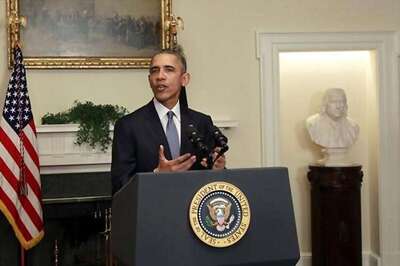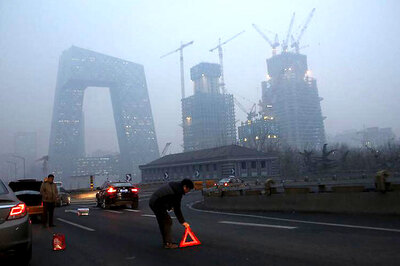
views
New Delhi: Food inflation in the country touched a two-and-half-month high of 9.13 per cent in the week ended June 11 on the back of costlier fruits, milk, onions and protein-based items.
Food inflation, as measured by the Wholesale Price Index (WPI), stood at 8.96 per cent during the previous week. It was almost 23 per cent during the second week of June, 2010.
Food inflation has crossed the 9 per cent mark after a gap of one week.
The latest food inflation numbers are the highest since the week ended March 26, 2011, when the rate of price rise of food items touched 9.18 per cent.
As per data released by the government today, fruits became dearer by 28.66 per cent year-on-year, while milk grew 15.30 per cent more expensive.
During the week under review, prices of onions went up by 11.89 per cent and eggs, meat and fish by 10.56 per cent on an annual basis.
Cereals were also up 4.32 per cent and potatoes became dearer by 0.71 per cent.
However, prices of pulses, wheat and vegetables went down during the week. While pulses became 10.34 per cent cheaper, wheat was down 1 per cent and vegetables 9.27 per cent.
Overall, primary articles reported inflation of 12.62 per cent during the period under review, down from 12.86 per cent in the previous week. Primary articles have a share of 20 per cent in the WPI.
The latest surge in food inflation comes close on the heels of the India Meteorological Department's (IMD) forecast that monsoon rains are expected to be below normal at 95 per cent of the Long Period Average (LPA), with margin for error of plus or minus 4 per cent.
A below normal monsoon can have a serious fallout on agricultural output.
Meanwhile, inflation of non-food primary articles stood at 18.43 per cent for the week ended June 11 as against 20.20 per cent during the previous week.
Fibres grew more expensive by 43.77 per cent and minerals by 25.90 per cent. Fuel and power became dearer by 12.84 per cent and petrol was up 33.23 per cent year-on-year.
On Wednesday, Finance Minister Pranab Mukherjee tried to allay concerns over the forecast of 'below normal' monsoon rains during the current season and said the projections are only a shade below the annual average.
"Let us wait for some more time... They (IMD) are saying it would be around 95 per cent and normal average is 98 per cent," he had said.
The latest surge in food inflation numbers belies the RBI's recent claim that headline inflation would be mostly driven by commodity prices in next few months and the rate of price rise in food items would moderate.
Overall inflation was mostly driven by high food prices in 2010.
Headline inflation in the country stood at 9.06 per cent in May. The RBI has already hiked key policy rates 10 times since March, 2010, to tame demand and curb inflation.
Food inflation was in double digits for most of last year, before showing signs of moderation since March this year. However, it has again started going up since the second half of May.
The government had to deal with a series of bad news during recent weeks on the economic front. While January-March economic growth stood at 7.8 per cent, the lowest in five quarters, industrial output also slowed down to 6.3 per cent in April.




















Comments
0 comment